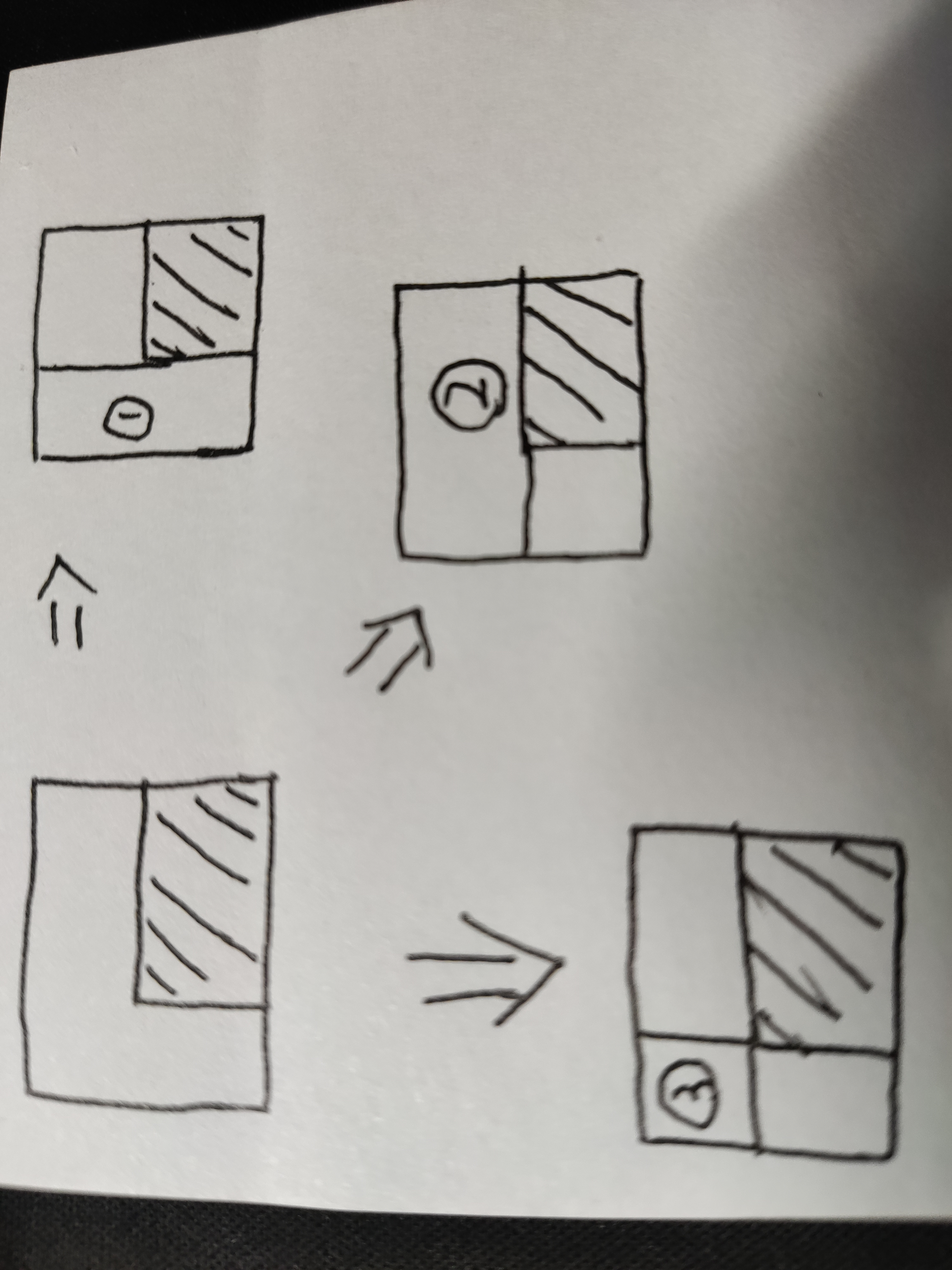preface
The one-dimensional prefix sum is introduced earlier. The two-dimensional prefix sum is the online upgrade of the one-dimensional prefix sum. The one-dimensional prefix sum is reflected in the array, while the two-bit prefix sum is reflected in the matrix.
1, What are two-dimensional prefixes and?
Based on the one-dimensional prefix sum, what we seek now is the sum of the number of any submatrix in the matrix, so we can use the two-dimensional prefix sum to solve this problem.
2, 2D prefix and explanation
introduce
For a matrix
For example: define a matrix g[n][m]
const int n=3,m=4;
int g[n][m]={{1,5,6,8},{9,6,7,3},{5,3,2,4}};
g[n][m] 1 5 6 8 9 6 7 3 5 3 2 4
(1) Find matrix(1,1)reach(2,2)And (2) Find matrix(0,1)reach(1,3)And
The easiest thing to think of is violent enumeration
Namely:
Question (1) 6 + 7 + 3 + 2 = 18
Question (2) 5 + 6 + 8 + 6 + 7 + 3 = 35
Its complexity is O(nm). If the matrix is short, it's OK, but when the data is too large, this method is somewhat time-consuming. Therefore, we introduce two-dimensional prefix and sum to reduce its complexity.
thinking
If we take this 3 * 4 matrix as a large rectangle
For problem (1), we can have another solution

< < let's live and see. I haven't understood the picture for the first time > >
(shadow is required)
The solution is: the shadow = large rectangle - (1) - (2) + (3);
Combined with g[n][m] matrix, we further analyze
Find the matrices g[1],g[2],g[3]
matrix g[1] 1 5 6 9 6 7 5 3 2
matrix g[2] matrix g[3] 1 1 5 6 9 5
problem(1) It can be solved as follows: g[1]-g[2]-g[3]+1 The question now is how to sum the matrices We introduce the two-dimensional prefix and sum[i][j] sum[i][j]Is from(0,0)reach(i,j)Matrix sum of
That's a better solution
Question (1)=sum[3][3]-sum[2][0]-sum[0][2]+sum[0][0];
sum[n][m] can be obtained from g[n][m]
sum[n][m] 1 6 12 20 10 21 34 45 15 29 44 59
Question (1) = 44-15-12 + 1 = 18 = 6 + 7 + 3 + 2
Expand your thinking and broaden your horizons By the right question(1)The solution can be inferred (set up sum[x1,y1][x2,y2]equivalent From( x1,y1)To( x2,y2)(and)
sum[x1,y1][x2,y2] =sum[x2][y2]-sum[x2][y1-1]-sum[x1-1][y2]+sum[x1-1][y1-1]
The code implementation is as follows (example):
#include<bits/stdc++.h>
using namespace std;
const int n=3,m=4;
int g[n][m]={{1,5,6,8},{9,6,7,3},{5,3,2,4}};
int sum[n][m];
void pre_sum() //Preprocessing generates two-dimensional prefixes and
{
sum[0][0]=g[0][0]; //first
for(int i=1;i<n;i++)
sum[i][0]=sum[i-1][0]+g[i][0]; //First column
for(int j=1;j<m;j++)
sum[0][j]=sum[0][j-1]+g[0][j]; //first line
for(int i=1;i<n;i++)
for(int j=1;j<m;j++)
sum[i][j]=g[i][j]+sum[i][j-1]+sum[i-1][j]-sum[i-1][j-1];
}
int get_sum(int x1,int y1,int x2,int y2)
{
if(!x1&&!y1) return sum[x2][y2];
if(!x1) return sum[x2][y2]-sum[x2][y1-1];
if(!y1) return sum[x2][y2]-sum[x1-1][y2];
return sum[x2][y2]-sum[x2][y1-1]-sum[x1-1][y2]+sum[x1-1][y1-1];
}
int main()
{
pre_sum();
cout<<get_sum(1,1,2,2)<<""<<endl<<get_sum(0,1,1,3);
return 0;
}
explain
Since sum [] [] is a two-dimensional array,
Therefore, the boundary should be specified first, and then the sum [] [] array should be preprocessed
void pre_sum() //Preprocessing generates two-dimensional prefixes and
{
sum[0][0]=g[0][0]; //first
for(int i=1;i<n;i++)
sum[i][0]=sum[i-1][0]+g[i][0]; //First column
for(int j=1;j<m;j++)
sum[0][j]=sum[0][j-1]+g[0][j]; //first line
for(int i=1;i<n;i++)
for(int j=1;j<m;j++)
sum[i][j]=g[i][j]+sum[i][j-1]+sum[i-1][j]-sum[i-1][j-1];
}
First of all, there must be no problem with the former sum[0][0]=g[0][0]
The following two for statements define the boundary of sum in advance
sum Specified boundary 1 6 12 20 10 15
The method of defining the boundary of two-dimensional prefix and is the same as that of one-dimensional prefix and
Then it is quite simple to find sum[i][j] according to the boundary
for(int i=1;i<n;i++) for(int j=1;j<m;j++) sum[i][j]=g[i][j]+sum[i][j-1]+sum[i-1][j]-sum[i-1][j-1];
Handle custom function get_ When sum(), return three special cases first
No matter how common the rule of return is, it's easy to understand. I won't say much (i.e. lazy)
summary
The two-dimensional prefix and the one-dimensional prefix are not difficult to understand. It may be easier to imagine a graph and use a graph to understand it.